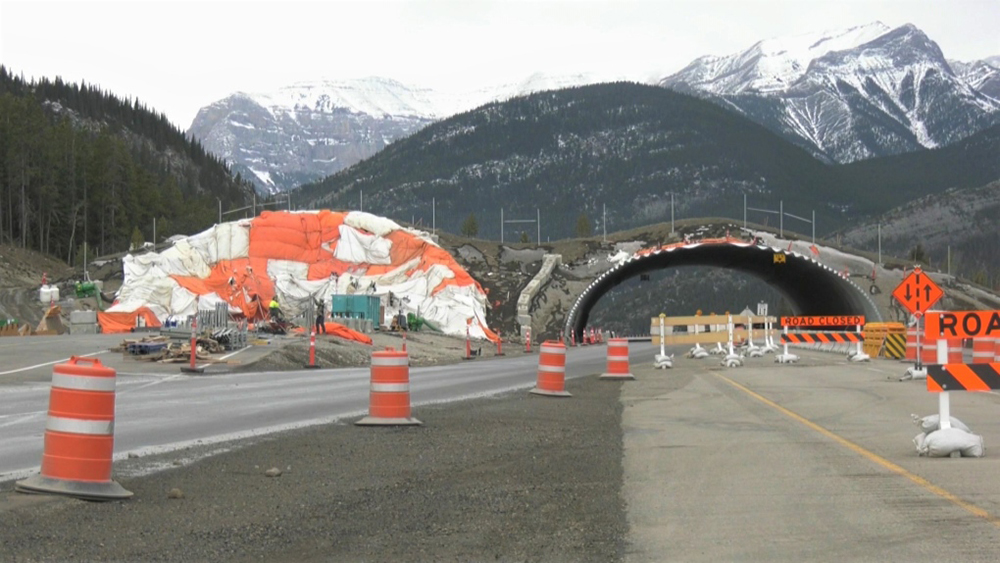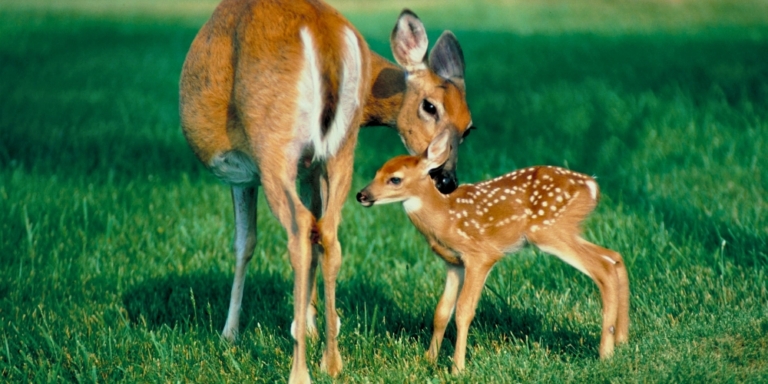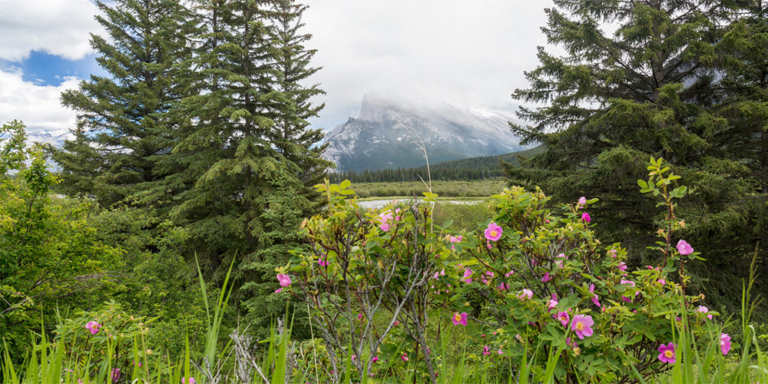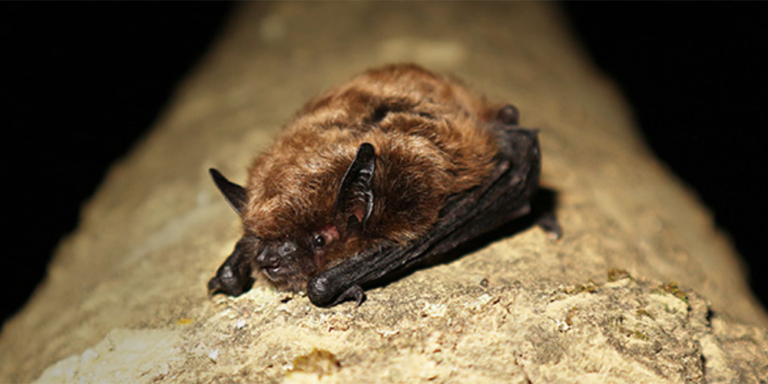A long-awaited wildlife fence is set to be constructed along the Trans-Canada Highway. It’s designed to decrease wildlife-vehicle collisions by up to 80 percent.
Alberta Transportation and Economic Corridors have hired Dillon Consulting Limited to oversee the project.
The company specializes in environment, health, safety, transportation planning, environmental engineering and more.
The wildlife fence will be about 2.5 metres high and span 10 kilometres from the Bow River Bridge, on the southeast edge of Canmore, to Banff National Park’s east entrance, where the park’s existing wildlife fence begins.


More Collisions
Wildlife fences prevent animals from crossing roads, which helps prevent accidents and protect wildlife and human lives.
The push for the fence through Canmore gained momentum after several vehicle accidents involving elk near the Palliser lands in the spring of 2019.
Following these incidents, which resulted in the loss of seven elk and injured a woman, demands for a wildlife fence grew louder.
Canmore Mayor Sean Krausert advocated for the fence and is relieved that the province is finally addressing the safety risks posed to humans and wildlife.
“…we are hopeful that this is another large step forward in our efforts to coexist with wildlife in the valley to the benefit of all,” said Krausert.
Canmore Council passed a motion in 2022 for Krausert to write a letter to the province requesting action to reduce wildlife accidents on the Trans-Canada Highway.
For years, Canmore and conservation groups like the Yellowstone to Yukon (Y2Y) Conservation Initiative have advocated for wildlife fencing.
Y2Y’s motto is to “maintain natural connections for wildlife, for people and nature, communities and culture, for habitat and waterways.”
The Y2Y initiative works with communities like Canmore to create wildlife corridors and fences that help animals roam safely.
“It’s an area where the province has collision data that shows a high number of collisions of wildlife, so we’re happy to see it moving forward,” said Y2Y landscape connectivity specialist Tim Johnson.
The hope is that the highway fence will funnel wildlife toward existing crossing structures within Banff National Park and encourage safer passage across the highway.
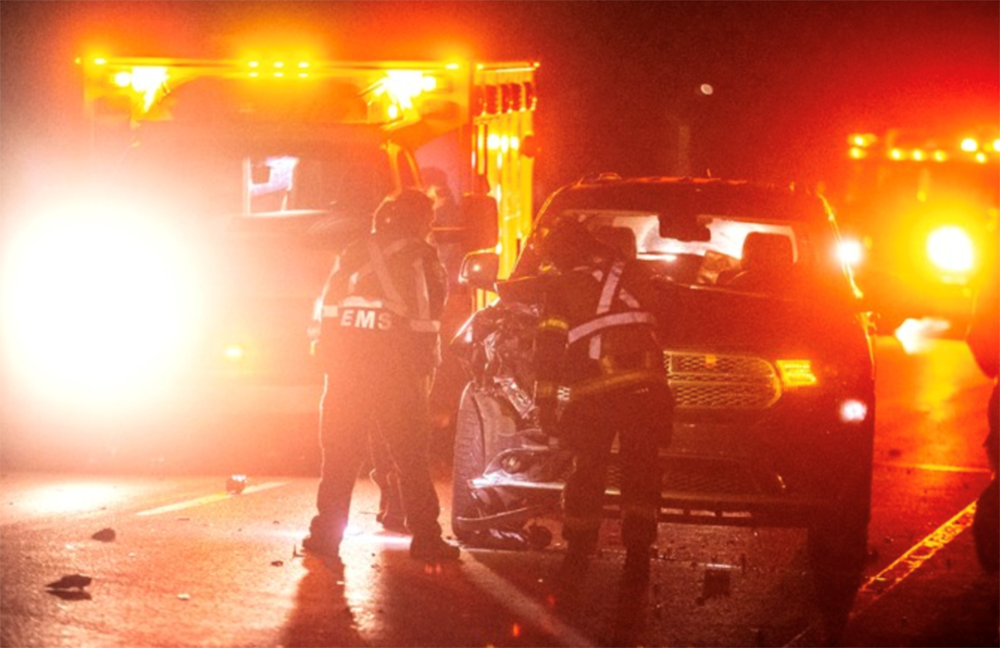

Room For Improvement
A 2012 study titled Highway Wildlife Mitigation Opportunities for the Trans-Canada Highway in the Bow River Valley shows that wildlife-vehicle collisions are a glaring issue in Alberta.
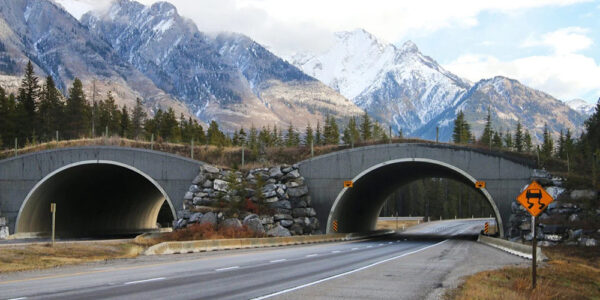

The study pointed out problem areas stretching from Banff’s east gate east to Highway 40, including the stretch of highway from Bow River Bridge in Canmore to the east entrance of Banff National Park.
In his letter to the province, Krausert claims there were almost 40 collisions involving wildlife on the Canmore section of the highway between January 2019 and July 2022.
The Bow Valley serves as a crucial wildlife corridor, helping the movement of various species, including grizzly bears, black bears, wolves, cougars, deer, and elk.
There is a lot of animal activity in the Bow Valley. But there is plenty of human activity, too, with as many as 34,000 people using the highway daily in the summer.
Heavy traffic on the Trans-Canada Highway creates movement and safety risks for humans and animals.
To combat the effects of traffic on wildlife, the Alberta government set aside $15 million over three years in the 2023 budget to address animal-vehicle collisions.
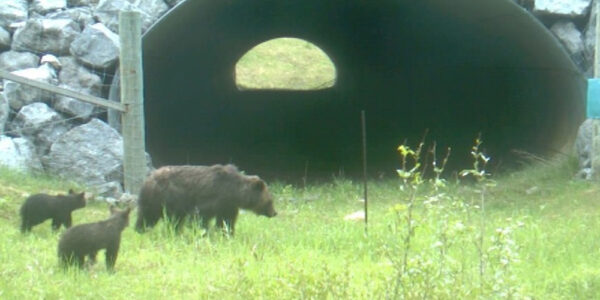

The budget provides funding for projects that minimize animal-vehicle collisions on the Trans-Canada Highway, such as Canmore’s latest wildlife fence.
The town’s wildlife fence is a step in the right direction, but Johnson claims the project has shortcomings.
“Fencing is something that is definitely a way to keep wildlife off the highway and definitely a way to improve motorist safety; it’s not ideal in terms of wildlife connectivity,” he explained.
Wildlife connectivity refers to an animal’s ability to move from one place to another. In exchange for minimizing wildlife-vehicle accidents, wildlife fences prevent animals from moving freely.
So, what’s the solution?
Thompson believes an ideal scenario would include planning for future wildlife crossings in the proposed fenced area through Canmore, like Banff National Park’s overpasses.
The Road Ahead
There are almost 40 wildlife underpasses and six overpasses between Banff National Park‘s east entrance to the border of Yoho National Park on the Trans-Canada Highway.
These crossing structures have reduced wildlife-vehicle accidents by more than 80 percent. For elk and deer specifically, the number of collisions has been reduced by 96 percent.
Crossing structures are an invaluable tool in protecting wildlife and humans.
According to a Y2Y survey, more than 80 percent of Albertans agree that the province should invest in building more crossing structures.
These structures help protect some of our most iconic wildlife, including grizzly bears, threatened mainly by vehicle collisions and habitat loss.
Collisions also cost a pretty penny.
Alberta Transportation claims wildlife-vehicle accidents account for 60 percent of vehicle collisions and cost $300,000 per day in property damage, health care, and highway maintenance costs.
A combination of crossing structures and wildlife fences is the best way to protect our lives, animals, landscapes, and wallets.
Consultations with stakeholders and First Nations are planned for Canmore’s wildlife fence project,which is slated to break ground in 2025.
